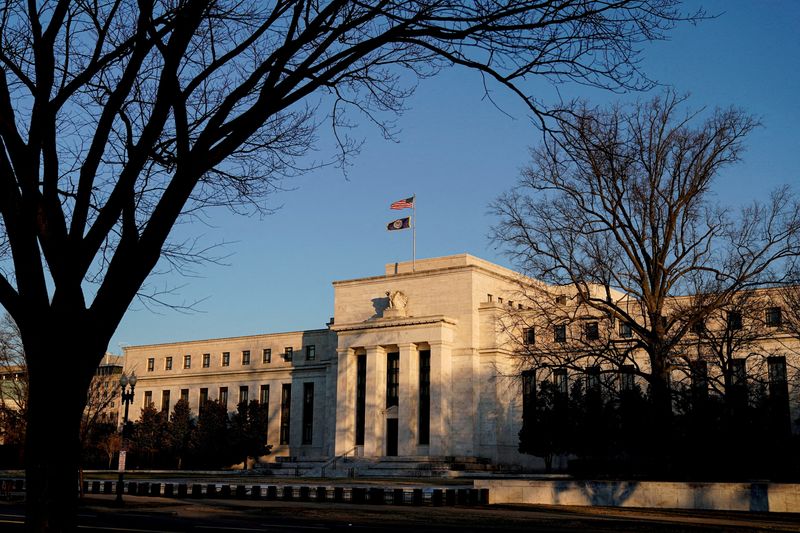A look at the day ahead in European and global markets from Wayne Cole.
After a rather flat Wall St finish, Asian stocks have done better so far on Thursday thanks in part to an earnings beat from chip designer Nvidia (NASDAQ:NVDA) Corp. Its stock surged almost 9% after the bell and helped lift Nasdaq futures up 0.9%, with a spillover to South Korean and Taiwan tech.
That offered a brief break from brooding on interest rates, only for the Bank of Korea to spoil the mood with a hawkish-pause on hikes. While it held rates at 3.5% as expected, the commentary warned that restrictive policy would be needed for a "considerable time".
Five of the seven-member board also wanted to keep open the option for rates to reach 3.75%, perhaps with an eye on staunching further losses for the won.
This is all part of the higher for longer theme that saw central banks in New Zealand and Israel hike by 50 basis points this week and flag yet more to come.
Minutes of the Federal Reserve's latest meeting showed unanimity on the need to go higher, and that was before the barnstorming January payrolls report quashed all talk of imminent recession.
Fed fund futures now price in three more hikes to 5.25-5.50% and have drastically scaled back the outlook for future rate cuts, with barely one priced in by December.
For sure, markets always doubted the world would go back to the past decade of uber-low rates, but there was a general felling they might settle in a 1-3% range further out.
Now the range is looking more like 3-6%, a challenge for assets other than bonds and especially equities with high PE ratios - maybe including Nvidia's 88.3.
New York Fed President John Williams sounded suitably stern late Wednesday, noting that with global supply chains still disrupted, goods prices may not continue their recent decline and inflation in core services excluding housing continues to be far too high.
Indeed, it's looking like global supply chains will never be the same, what with the pandemic, the Russian-Ukraine war and Sino-U.S. tensions. Trade blocks are back in, while just-in-time manufacturing is out the window and nations are all about onshoring and securing domestic supply.
Add to that the impact of climate change, both directly on food prices and indirectly through the cost of transitioning to renewables.
Most developed nations also face a decline in working-age populations and sharply rising dependency ratios. Unless and until productivity makes a comeback, fewer hands to make things will tend to lead to rising prices.
All of which suggests higher inflation is here to stay and the neutral level of real interest rates has shifted upward. Welcome to the new R*.
Key developments that could influence markets on Thursday:
- The final read of EU January CPI is expected to see an upward revision to 8.6% y/y, from 8.5%

- U.S. second estimate of Q4 GDP is seen staying at 2.9%, while weekly jobless claims are forecast to edge up to 200,000
- Fed presidents Daly and Bostic are on speaking duties